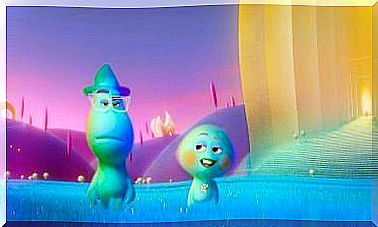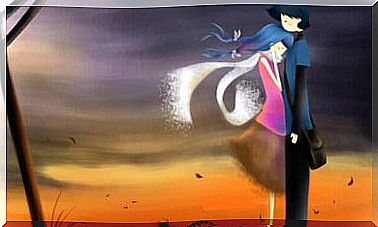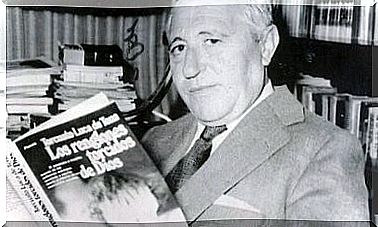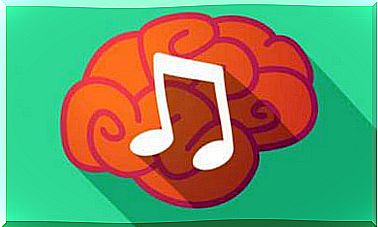Coulrophobia: Why Is There A Phobia Of Clowns?

There is an intense and excessive fear of clowns, it is called coulrophobia, a condition with historical and psychological roots. And it is that, although it seems strange to us, clowns are frankly creepy for many.
Some people think of clowns and imagine big smiles, brightly colored costumes, and lots of laughs. However, for others the clowns are monstrous and mysterious, hiding evil intentions behind a cheerful mask.
Jesters, court clowns, and other entertainers were the predecessors of the modern clown. While they didn’t actually look or act like today’s clowns, they did master the basic game.
In particular, the clowns of yesteryear had the unmatched ability to break taboos without consequences. In this article, we will try to elucidate why there is this double aspect in terms of the vision of clowns, from a historical perspective and psychological explanation.
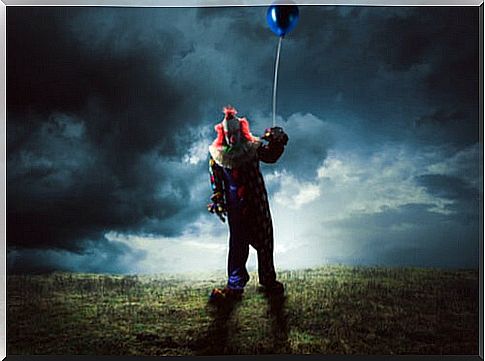
Coulrophobia: the sinister evolution of clowns
There were artists in the avant-garde who turned “doing the clown” into culture. Among the most prominent, we find Joseph Grimaldi and Jean-Gaspard Deburau. While these two clowns excelled at making people laugh, their own lives were no laughing matter.
The Grimaldi Clown Story
Grimaldi was the most important British clown of the 19th century and, perhaps, of all time, to such an extent that his “nom de guerre” (Joey) is still used in England as a synonym for clown. In his almost fifty-year career, Grimaldi worked in theaters today legendary such as Sadler’s Wells, Drury Lane or Covent Garden.
His life was anything but happy: he suffered from depression, had an alcoholic son and his first wife died in childbirth. All of this led him to leave his profession prematurely, dying broke from his alcoholism in 1837.
Charles Dickens did a homage style to him, but that homage was somewhat creepy and terrifying. Dickens wrote his memoirs sinisterly in the book The Pickwick Papers , prompting people to begin to associate this profession with something chilling.
The story of the clown Jean-Gaspard Deburau
His story is even more terrifying than Grimaldi’s. Deburau murdered a child whom he struck with a cane in a confusing episode for which he was ultimately not punished. The separation of his wife and son also marked him; This did not prevent him from signing an advantageous contract with “Los Funámbulos” with whom he would remain the rest of his days.
Coulrophobia: criminal clowns in real history and in the movies
John Wayne Gacy was an obese and self-conscious child, with an alcoholic father who mistreated him and abused his mother. Gacy fell off a swing at age 11 and developed a blood clot causing him to pass out. His father did not believe him and accused him of pretending to obtain compassion.
As an adult, with his theatrical skills, he volunteered to act as a clown at his friends’ parties. It was advertised as “Pogo the Clown.” There is a photo that shows him with Rosalynn Carter, the president’s wife, who signed a loving dedication to him.
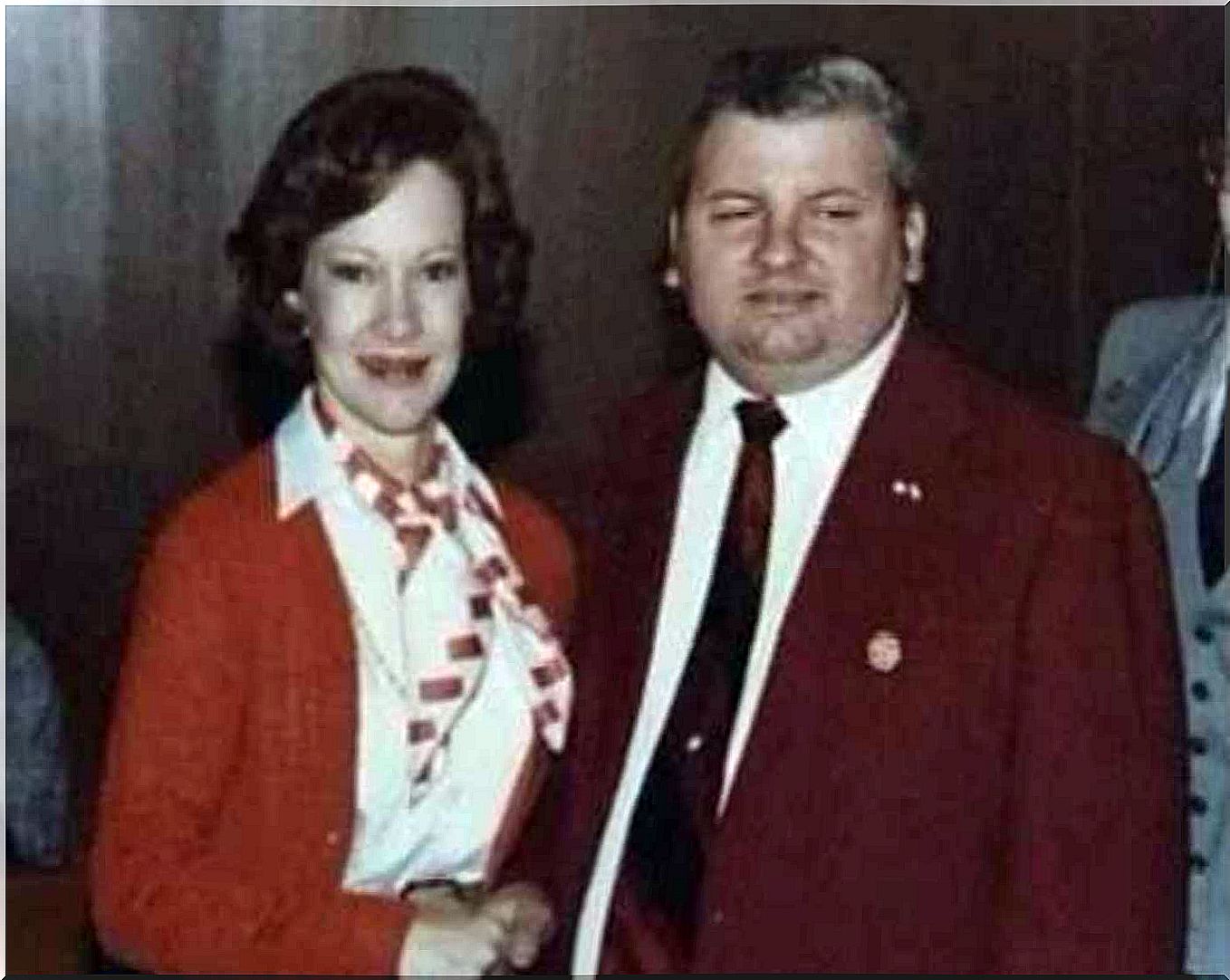
After incriminating testimony, Gacy finally acknowledged that he had murdered and abused 33 men, the vast majority very young, and indicated to the prosecutor where he had buried them. His confession did not save his life.
Photos of Gacy’s creepy clown character circulated everywhere. To top it all, Gacy was quoted as saying, “A clown can get away with it.”
Since then, Western society’s perception of clowns seems to have changed. Instead of associating clowns with funny jokes, more and more people seem to think that clowns are no good and that a clown’s outwardly jovial appearance covers a much more sinister side.
Stephen King was based on John Wayne Gacy to create the character of Pennywise. In fact, the 1990 version of It reflected a Pennywise much closer to Gacy’s aesthetic.
Another macabre clown is the famous Joker. The most macabre and lunatic character in pop culture for his atrocities and his characteristic appearance, since the typical clown smile is permanently drawn on his face.
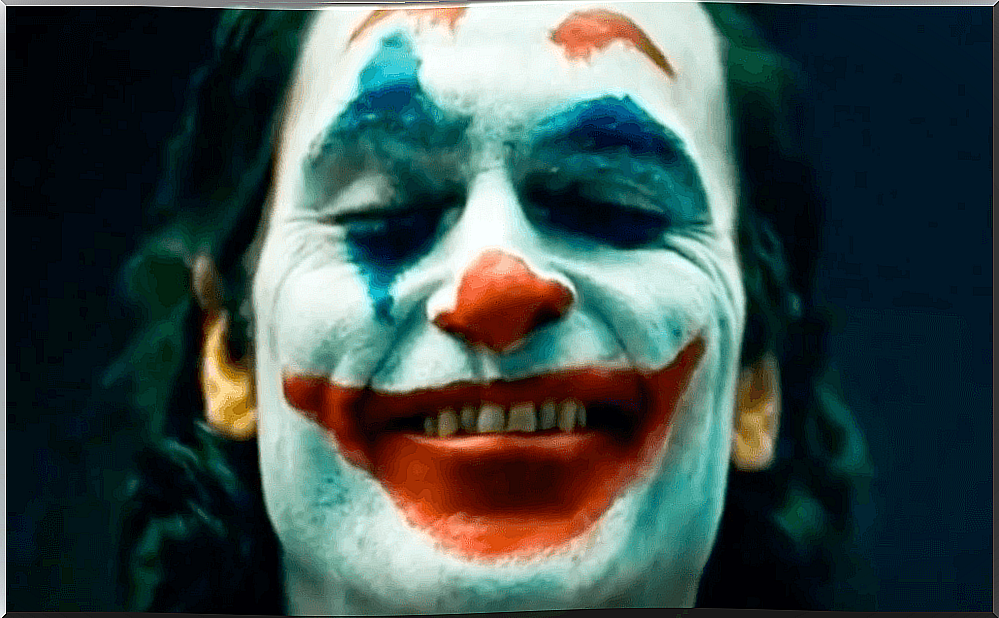
Psychological explanation of coulrophobia
Some psychologists and anthropologists claim that clown images trigger some of our universal responses to certain social stimuli.
A study conducted by the University of Sheffield in 2008, which included 250 children aged 4 to 16, found that all age groups disliked clowns, even though they did not exactly develop coulrophobia.
The aim of the study was to improve the children’s decoration of a hospital. The results indicated that, if the walls were decorated with images of clowns, these could cause restlessness and anxiety in the patients.
A more in-depth analysis of the results was made and it was concluded that the feeling of fear and unease arose from an “indefinite familiarity”.
In the scientific community there is a consensus that coulrophobia arises because it is not possible to know exactly what the colorful makeup and disproportionate facial features of clowns hide. These characteristics allow clowns to adopt a new identity and not comply with certain social patterns that they would otherwise have to comply with.
According to psychiatrist Steven Schlozman of Harvard Medical School, the permanent and horrifying smile can produce cognitive dissonance: “ Our mind interprets that smiles are generally positive; however, it is not possible to smile all the time, because if so, something is wrong. Thanks to people’s behavior we can interpret them, but if people’s appearance or their behavior does not change, they become terrifying ”.
